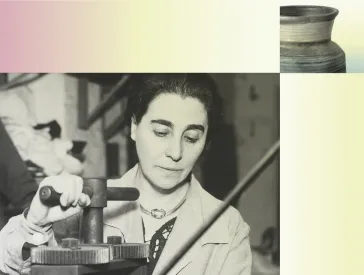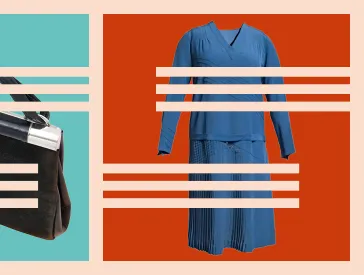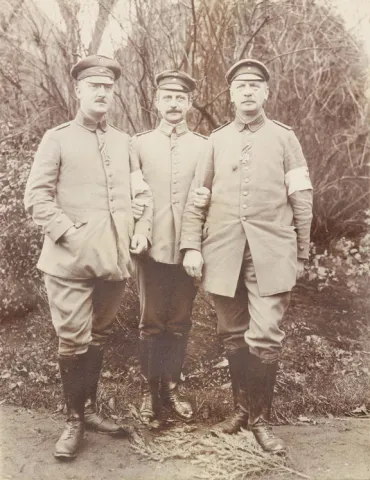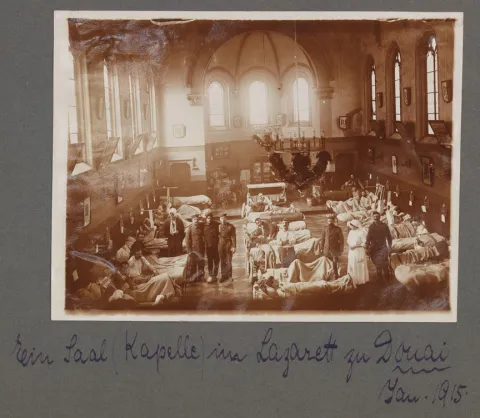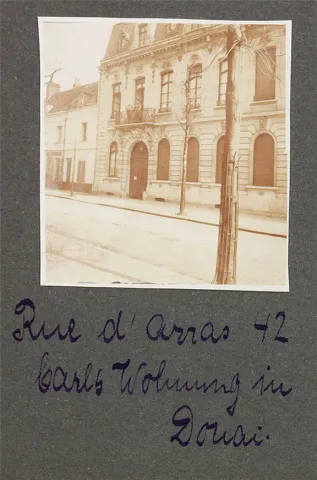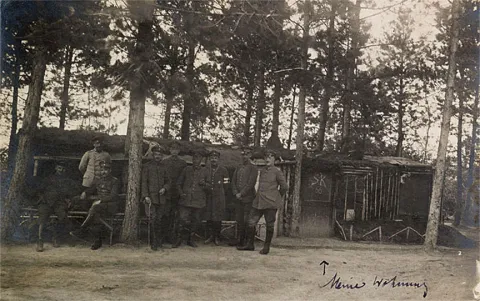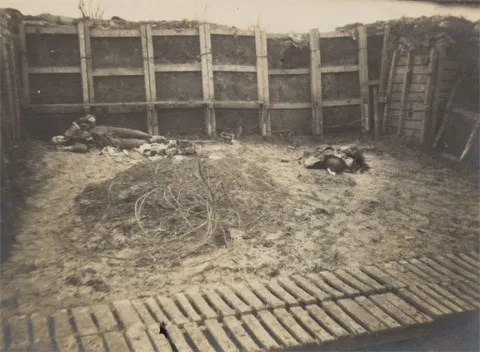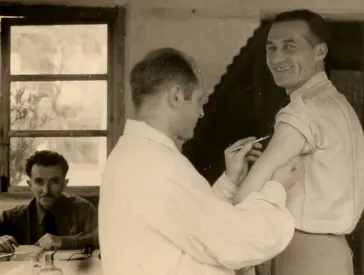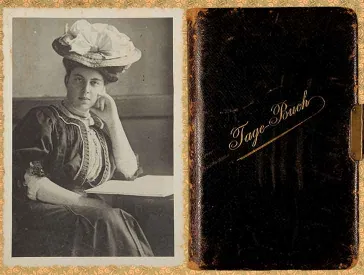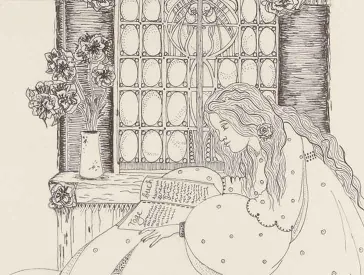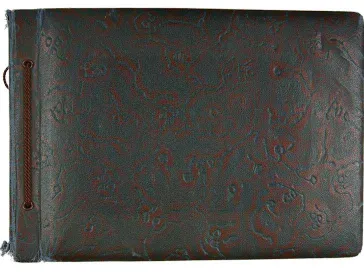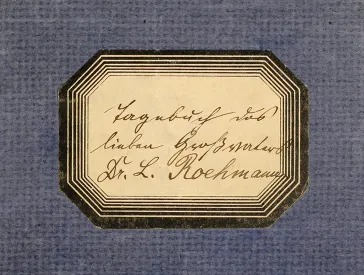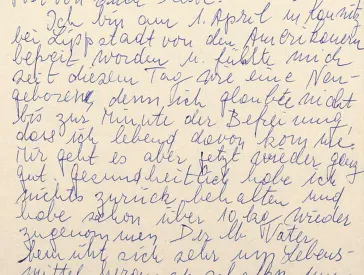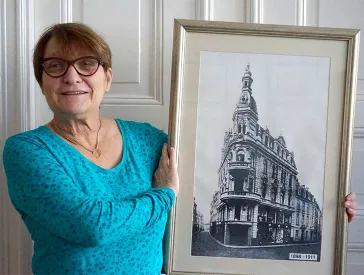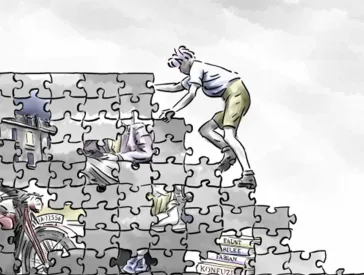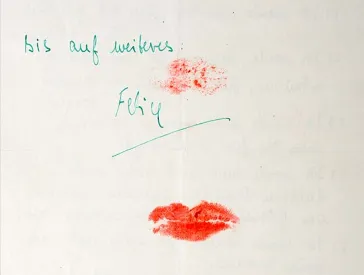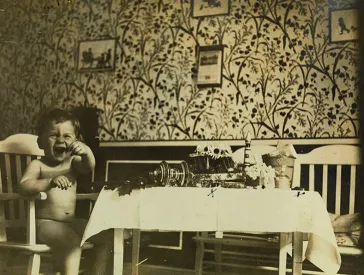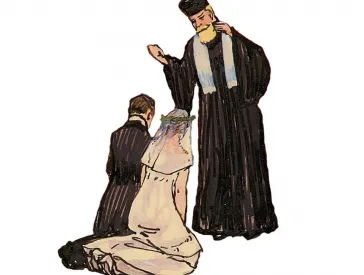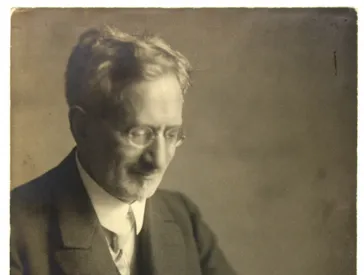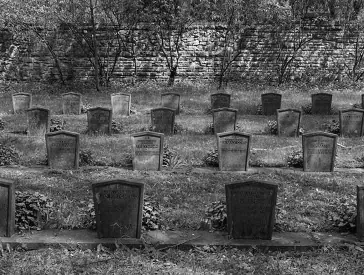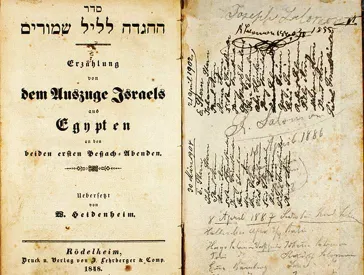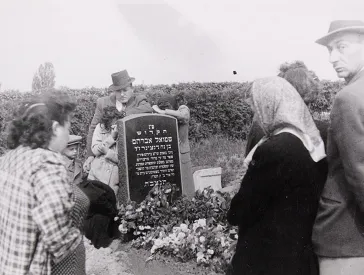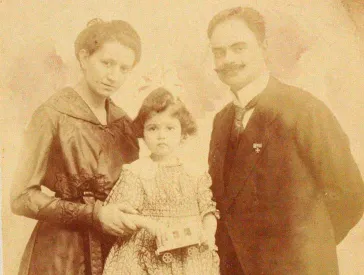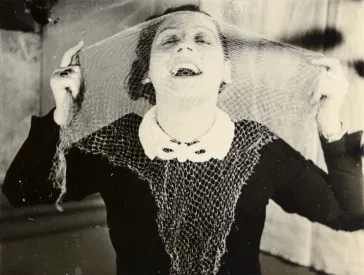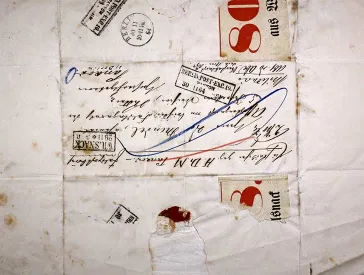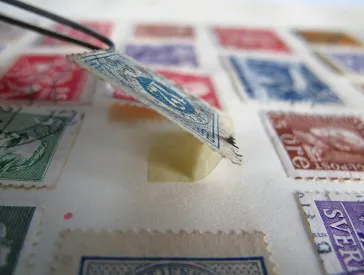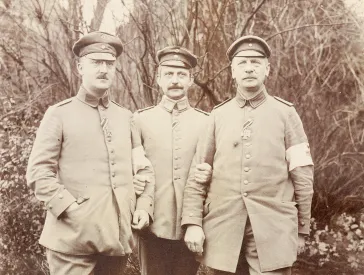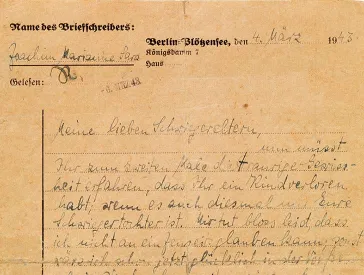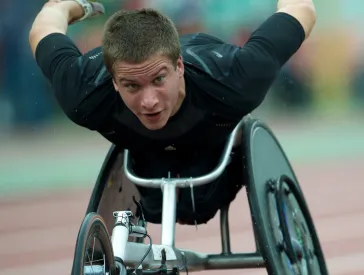Von idyllischen Landschaftsaufnahmen zu Bildern vom Schützengraben
Der Erste Weltkrieg in den Fotografien eines Militärarztes
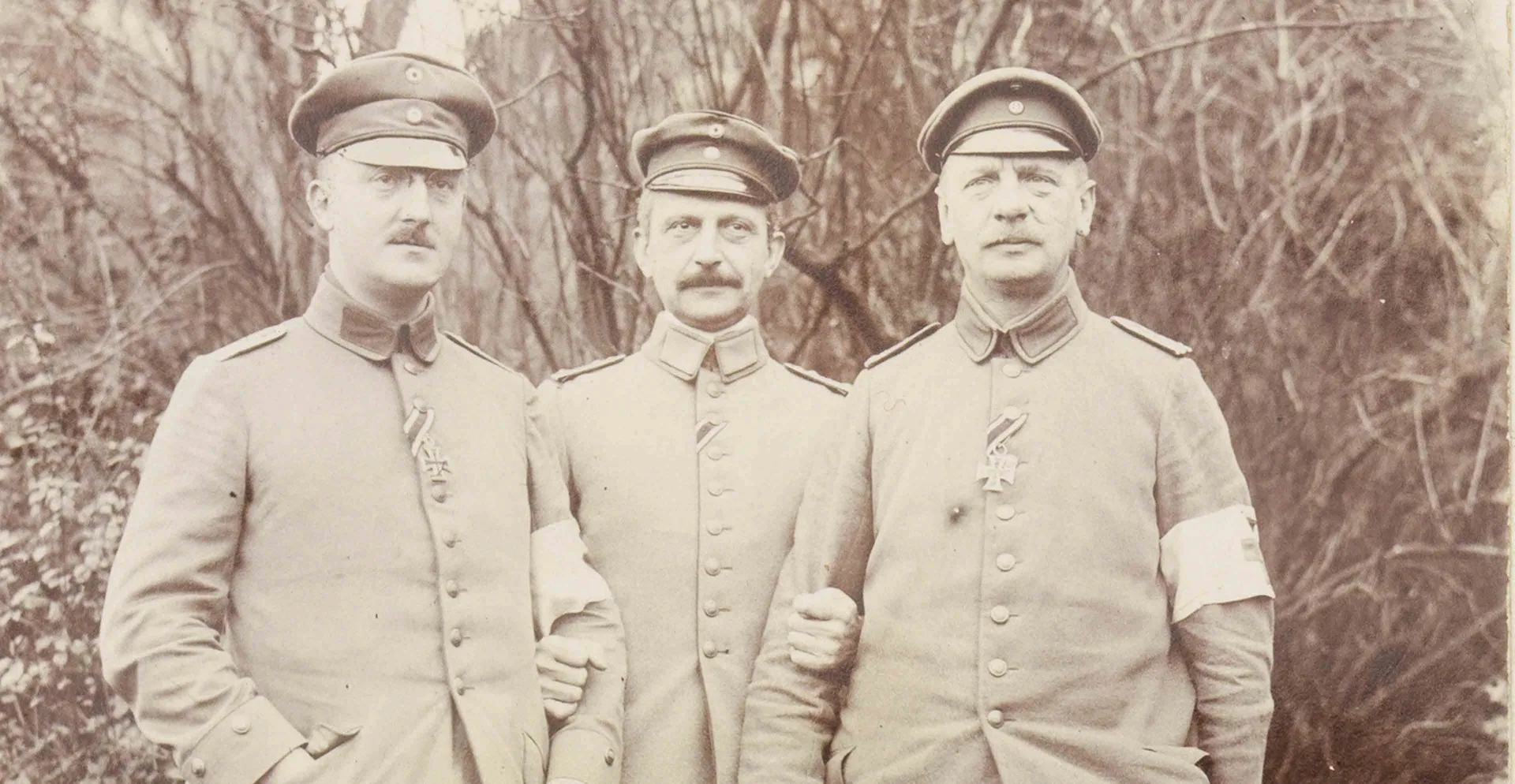
2014 war in der Ausstellung Der Erste Weltkrieg in der jüdischen Erinnerung ein Album aus unserer Sammlung zu sehen, das Fotografien von verschiedenen Orten an der Westfront zeigt. Das Album ist Teil des Nachlasses des Berliner Frauenarztes Dr. Carl Hartog (1877–1931) und wurde dem Museum Ende 2001 von Hartogs Enkelin Virginia Van Leer Dittrich geschenkt.
Carl Hartog, 1877 in Goch am Niederrhein als Sohn eines Lederfabrikanten geboren, studierte in München, Bonn und Würzburg Medizin und ließ sich anschließend als Gynäkologe in Berlin nieder.
Bereits während seiner Studienzeit leistete er ein halbes Jahr lang seinen Militärdienst und blieb auch als ausgebildeter Arzt dem Militär treu: Zunächst zum Assistenzarzt berufen, wurde er alsbald zum Oberarzt und schließlich zum Stabsarzt der Reserve befördert. In dieser Position war er während des gesamten Ersten Weltkriegs in verschiedenen Lazaretten tätig. Sein Einsatz um die verwundeten Soldaten wurde mit dem Eisernen Kreuz sowohl der zweiten Klasse als auch der ersten Klasse belohnt.
Das Album besteht aus 92 Schwarzweiß-Fotografien, die auf 46 braunen Kartonseiten befestigt sind. Da es keinerlei Hinweise auf mögliche Fotografen oder Fotoateliers gibt, vermute ich, als Kuratorin für Fotografie, dass es sich um private Aufnahmen handelt, die Carl Hartog nach dem Krieg in einem Album zusammenführte. Die Fotografien stammen aus den Jahren 1914 bis 1918. Einige Abbildungen wurden handschriftlich datiert, bei anderen fehlt die Ort- oder Datumsangabe. Um diese Fotos historisch einordnen zu können, musste ich intensiv recherchieren:
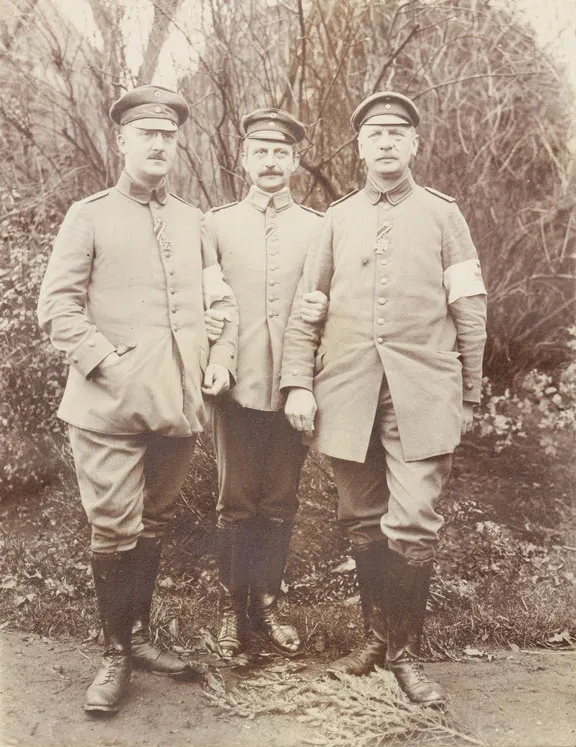 X
X
Carl Hartog (1.v.l.) mit zwei Kameraden, Douai, Januar 1915; Jüdisches Museum Berlin, Inv.-Nr. 2001/212/93/003, Schenkung von Virginia Van Leer Dittrich
Ich nahm unter anderem Bildvergleiche vor oder suchte in den Bildern nach aufschlussreichen Bilddetails. Gasmasken wurden zum Beispiel erstmals im Herbst 1915 eingesetzt und Stahlhelme erst ab 1916 eingeführt, als Ersatz für die bis dahin üblichen Pickelhauben. Anhand dieser und anderer Details konnte ich eine grobe Datierung der unbeschrifteten Bilder vornehmen. Bei der örtlichen Zuordnung der Aufnahmen half mir eine Dienstzeitbescheinigung mit den verschiedenen Einsatzorten, die von Henriette Hartog nach dem Tod ihres Mannes angefordert wurde und die ebenfalls Teil seines Nachlasses ist.
Ab dem 18. Oktober 1914 war Carl Hartog im Kriegslazarett in Douai in Nordfrankreich tätig, ab 19. Januar 1916 Chefarzt in einem Lazarett in Thale im Harz und ab dem 13. Oktober 1916 gehörte er der Sanitäts-Kompagnie 66 an und wurde in dieser Zeit vermutlich an unterschiedlichen Orten eingesetzt. Die Abfolge der Einsatzorte lässt sich auch im Album nachvollziehen.
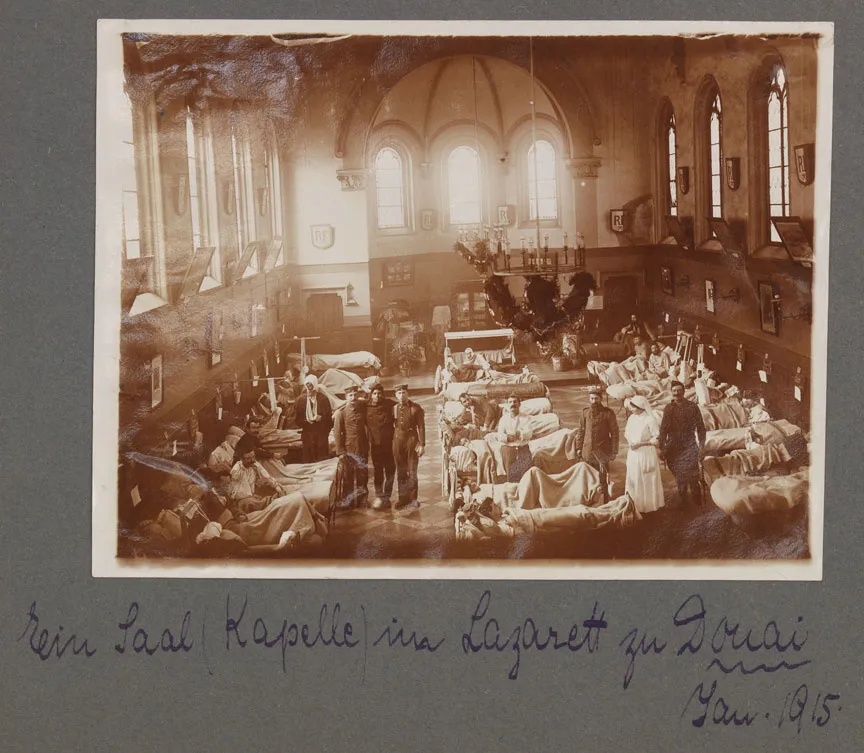 X
X
Krankensaal des Kriegslazaretts in Douai in einer Kapelle, Douai Januar 1914; Jüdisches Museum Berlin, Inv.-Nr. 2001/212/93/007, Schenkung von Virginia Van Leer Dittrich
Die ersten Aufnahmen stammen aus Douai, nur kurz unterbrochen durch Abbildungen aus dem nahegelegenen belgischen Ort Langemark. Es folgen wenige Bilder aus Thale und abschließend Fotografien aus verschiedenen Städten in Frankreich wie Saint-Étienne, Sommepy-Tature, Neuville-Day, Longwy, Thanvillé und weiteren.
Die Stadt Douai wurde bereits am 1. Oktober 1914 von deutschen Soldaten eingenommen und blieb bis zum Kriegsende unter deutscher Besatzung. Etwa fünfzehn Kilometer hinter der Front gelegen, entwickelte sie sich zu Beginn des Krieges zu einer Durchgangsstadt, von der aus deutsche Soldaten an die Front zogen oder von dort zurückkehrten und wo sie ärztliche Versorgung oder Ruhe und Ablenkung finden konnten. Im Gegensatz zur französischen Bevölkerung, die den Restriktionen und Schikanen der Besatzungsmacht rigide unterworfen waren, führten die deutschen Soldaten hier ein beinahe „normales Leben“. So wirken auch die Abbildungen in Hartogs Fotoalbum aus Douai nahezu idyllisch.
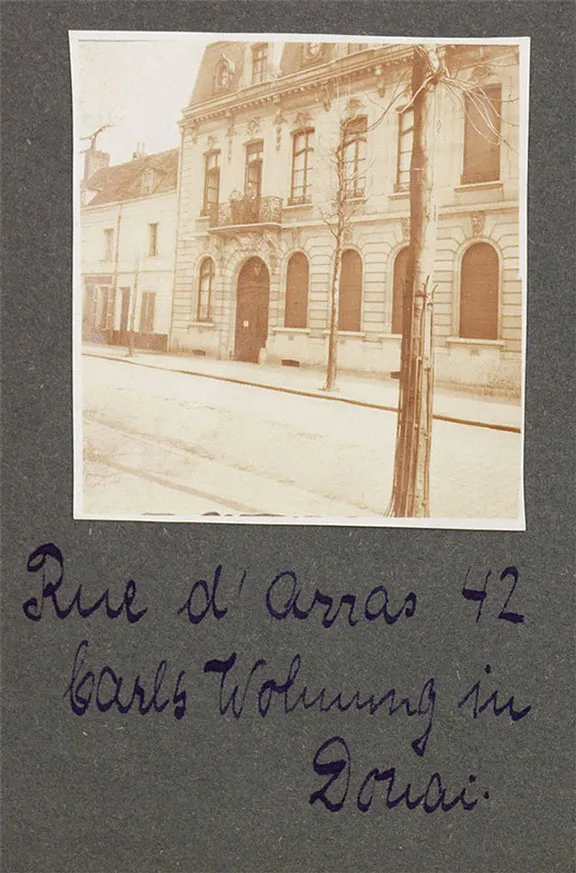 X
X
Carl Hartogs Wohnsitz in der Rue d'Arras in Douai, Douai ca. 1914-1915; Jüdisches Museum Berlin, Inv.-Nr. 2001/212/93/005, Schenkung von Virginia Van Leer Dittrich
Im Album wird die Serie dieser friedlichen Aufnahmen von Bildern unterbrochen, auf denen die stark zerstörte Stadt Langemark zu sehen ist. Hier fand bereits am 10. November 1914 ein Gefecht statt, das für etwa 2.000 deutsche Soldaten den Tod bedeutete.
Auch die Aufnahmen, die aus Hartogs späterer Zeit in der Sanitäts-Kompagnie 66 stammen, spiegeln die Realität des Krieges: eine Fotografie mit der Unterschrift „Meine Wohnung“ zeigt eine Waldbaracke und nicht mehr, wie in Douai, ein herrschaftliches Haus; der touristische Blick ist der Dokumentation von Kriegszerstörungen gewichen. Fotos von Gasmasken zeugen vom Einsatz neuer chemischer Waffen und auch der Tod ist in Ansichten von Soldatenfriedhöfen oder toten Soldaten in Schützengräben klar ins Bild gerückt.
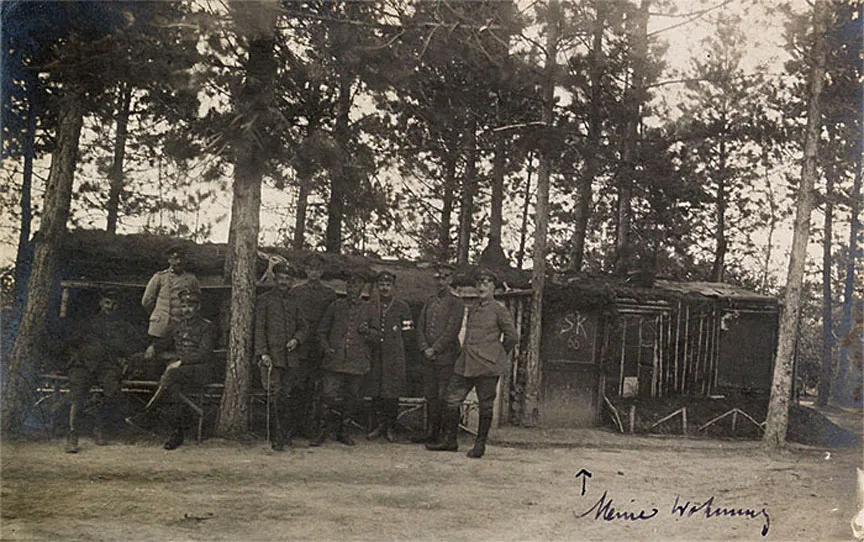 X
X
Gruppenbild von Carl Hartog (1.v.r.) mit seinen Kameraden vor seiner Behausung, Frankreich 1916-1918; Jüdisches Museum Berlin, Inv.-Nr. 2001/212/93/052, Schenkung von Virginia Van Leer Dittrich
Für viele jüdische Soldaten war die Teilnahme am Ersten Weltkrieg Ausdruck ihres Patriotismus. Viele von ihnen mussten miterleben, dass dieser sie Jahre später nicht vor Diskriminierung und Verfolgung durch die Nationalsozialisten schützte. Carl Hartog blieb diese Erfahrung erspart. Er starb im November 1931. Seiner Frau und seinen beiden Töchtern gelang die Emigration in die USA.
Theresia Ziehe, Kuratorin für Fotografie
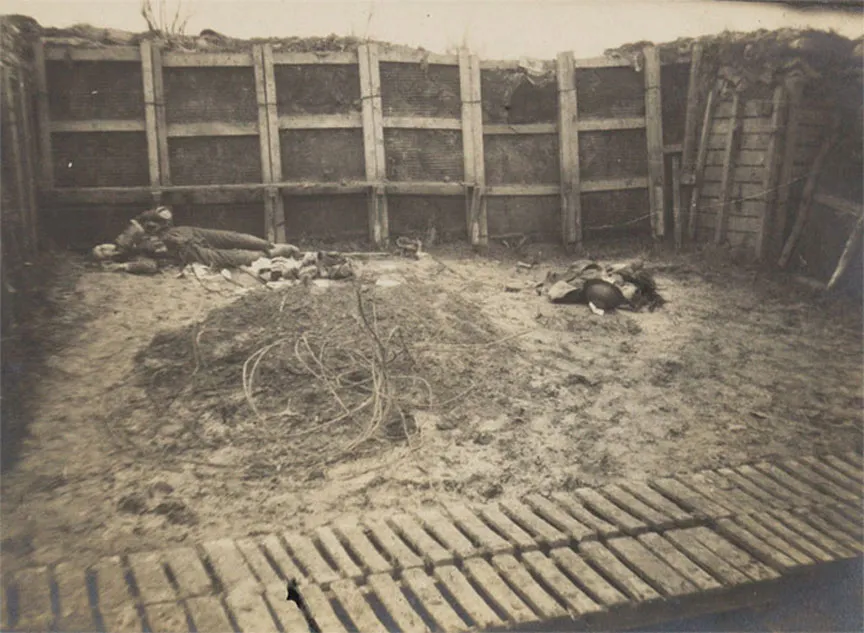 X
X
Schützengraben mit militärischer Ausrüstung und einem toten Soldaten, Frankreich ca. 1918; Jüdisches Museum Berlin, Inv.-Nr. 2001/212/93/083, Schenkung von Virginia Van Leer Dittrich
Zitierempfehlung:
Theresia Ziehe (2014), Von idyllischen Landschaftsaufnahmen zu Bildern vom Schützengraben. Der Erste Weltkrieg in den Fotografien eines Militärarztes.
URL: www.jmberlin.de/node/9553
Blick hinter die Kulissen: Anekdoten und spannende Funde bei der Arbeit mit unseren Sammlungen (22)
